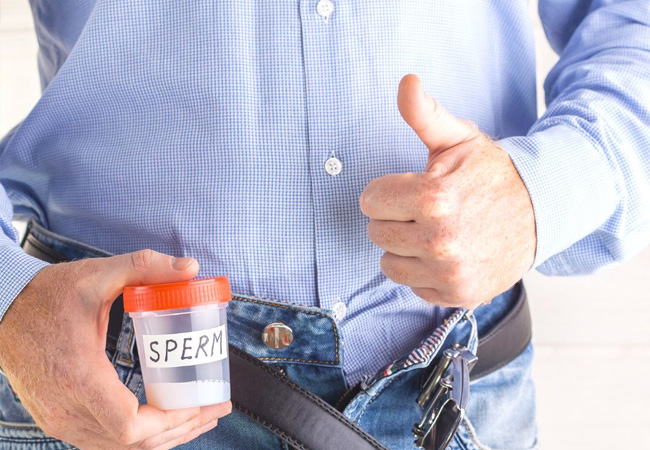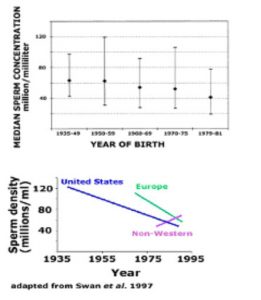Acupuncture for Male Fertility & Sperm Health
Male fertility plays a key role in conception. Acupuncture may help support sperm health, including motility, count, and morphology. We provide care tailored to your needs and work alongside medical testing and treatment if you’re exploring fertility as a couple.
If you have discovered that you have a less than optimal sperm analysis, you are probably wondering – what else can I do to improve my chances of conceiving? Sadly, one in five Australian couples have trouble conceiving, and male infertility is a contributing factor in 50% of these cases.
As men age, the quality and number of their sperm decreases (a man’s average sperm volume drops by 20% between the ages of 30 and 50 years old). The older the man, the longer the length of time it will take for his female partner to conceive. This is often coupled with an increased incidence of miscarriage, regardless of her age. Sperm motility (i.e. the sperms’ ‘swimming power’) also drops 3.1% for each advancing year of age and the percentage of sperm who swim in a purposeful manner decreases by 5% in the same period. Over and above these typical declines with age, there is a much more concerning picture to be aware of.
Male infertility now affects one in twenty men and 40% of male infertility cases are due to poor sperm quality. Over the past 30 years, we have seen a 30% decrease in average sperm health?? within the general male population. The average male sperm count has dropped 45% from 113 million/ml to 66 million/ml and the number of men with low these sperm counts has tripled. What this means is that the average sperm count of a 30 year old today is about a quarter of what it was in 1925.

The cause of this stark decrease appears to be an increased exposure to environmental pollutants, either during the time in the womb or later in life. Environmental polluntents such that have an diruptive effect of endocrine system called Endocrine Disruptive Chemicals in many commonly used plastics such as BPAs. Research also tells us that pregnancies of the partners of men exposed to environmental pollutants are also affected, experiencing higher still births and premature delivery.
The great news is, along with Chinese medicine and acupuncture, and the adoption of some lifestyle and other changes, things can change for the better in just a few months.
Further info on male infertility >
How acupuncture may improve sperm quality?
Acupuncture has shown to have a significant effect on the motility of sperm in certain trials. It is thought that the mechanism for this may be by improving the zinc/cadmium ratio. Cadmium causes thicker semen, which slows the sperm, whilst zinc improves sperm motility. By positively impacting the ratio of zinc, the percentage of moving/swimming sperm may improve.
It is also thought that SOD, an antioxidant which increases both sperm motility and count, may be positively influenced by acupuncture. Furthermore, acupuncture is thought to positively impact levels of met-enkephalin (an opioid which improves sperm mobility). Acupuncture may also influence sperm morphology, and some studies have shown that it may improve the fertilisation rate of ICSI (Intercytoplasmic sperm injection, an IVF procedure).

Length and type of treatment
Sperm take between 70 and 90 days to fully mature, so in an ideal world, acupuncture treatment is commenced 3 months prior to starting to conceive. However, not everyone has the luxury of time. Some studies suggest benefit from acupuncture after only 5 weeks of bi-weekly treatments, and so starting as soon as possible is recommended. Ten weekly or bi-weekly treatments is considered to be optimal due to sperm maturation time, although even 4-5 weekly treatments can still offer benefit.
Acupuncture points for improving sperm quality are located on the lower back, abdomen and lower leg. These points are used to promote blood flow to the pelvis and testes, improve a person’s strength and vitality, promote good-quality sleep and relieve stress.

In Chinese Medicine we believe that your whole wellbeing is important to the health of your sperm and so any other health problems or symptoms are addressed simultaneously during your acupuncture session.
Do I need to improve my sperm?
Sperm evaluation and parameters for fertility. Sperm is evaluated according to four main parameters:
- Volume of sperm (how much semen per ejaculation)
- Density/concentration/count of sperm (how many million sperm/ml)
- Morphology of sperm (% of normal versus abnormal in shape)
- Motility of sperm (% of moving/swimming sperm)
If any of these parameters are found to be out of range, fertility may be compromised.
Many men present with sperm results that are borderline and deemed ‘fine’. However, there are some other considerations we like to take into account when assessing the values attributed to sperm on a sperm analysis.
Firstly, reference ranges that fall within certain parameters account for normal values within a given population. If the majority of the population has lower values, then normal will be somewhere within the range of these overall lower values. This becomes obvious when looking at research that compares changes in normal values in a population over time (see below*), for example when looking at how overall sperm counts have declined rapidly in the 80 years.

Secondly, due to technological advancements in IVF that allow doctors to use techniques such as Intercytoplasmic Sperm Injection or ICSI (where they select the best possible sperm and inject it directly into the egg), low sperm counts are not considered to be much of a problem. However, from a Chinese medicine point of view, we would consider it imperative to the future health of the baby to improve the condition of the sperm. This will also increase the likelihood of a healthy embryo developing, when the egg and the sperm meet.
If we consider, for example, that a woman who is a non-smoker has been shown to have a 30% higher chance of miscarriage when her partner is a smoker – compared to a couple who are both non-smokers – we can see how sperm health affects embryo viability. Studies have also shown that fathers with lower sperm counts have an increased risk of birth defect and miscarriage rates.

*Each graph below reflects not only a change in average counts, but also normal ranges.
Decline in semen counts in Denmark 1935-1981. Sperm count decline in the United States and Europe (1935 – 1995)
You may like to reference information from these commonly used resources, too:
A number of randomised controlled trials and pilot studies have investigated the effect of acupuncture and laser or electro stimulation of acupuncture points, on sperm quality in men with poor motility, morphology, a varicocele or low sperm counts. Early indications of benefit are encouraging further research and larger trials.
To comply with AHPRA advertising guidelines we have removed our plain English summaries, abstracts and PDFs of these trials. Please feel free to contact us if you would like any information about any research papers listed here.
The Acupuncture Pregnancy Clinic offers supportive and collaborative care through acupuncture and Chinese medicine for fertility, IVF, pregnancy, and women’s health.
You can find us in Westmead, Sydney CBD, Alexandria, Gosford, Melbourne, and Mornington.
We welcome all individuals and couples.
Book a consultation or get in touch to learn more.
Prefer to talk to someone first?
Our top resources for Male Ferility
5 Tips for Sperm health
Sperm health- what is it? How is it reflected in a semen analysis? How can COVID-19 impact sperm health? If so is there anything you can do? How long should you wait after a COVID infection before undergoing IVF? Learn all this and more with expert Fertility Nutritionist and Naturopath Rhiannon Hardingham.
Guided Relaxation for Men Trying to Conceive >
